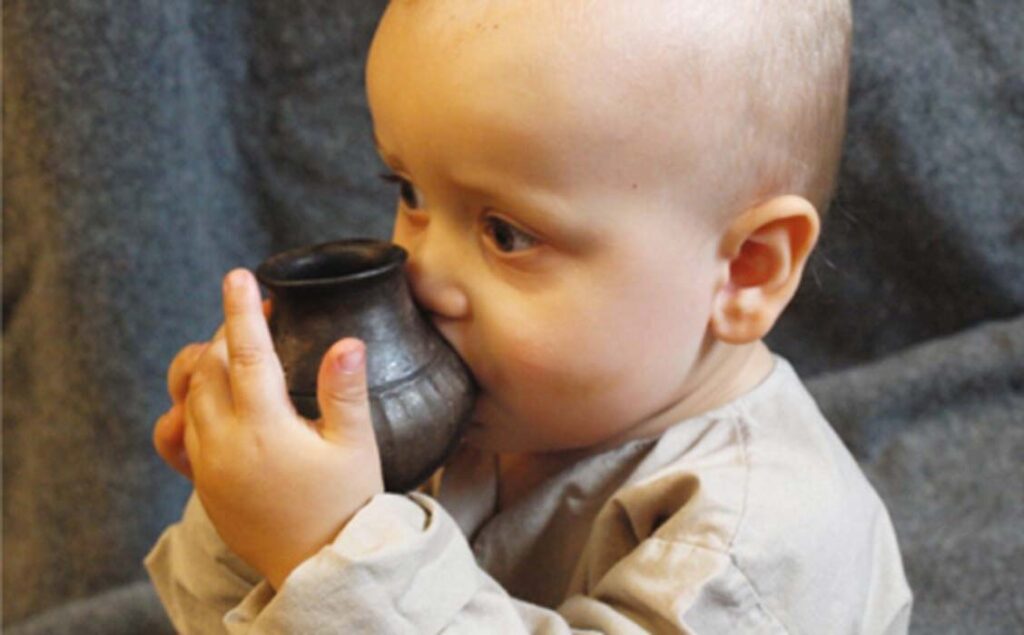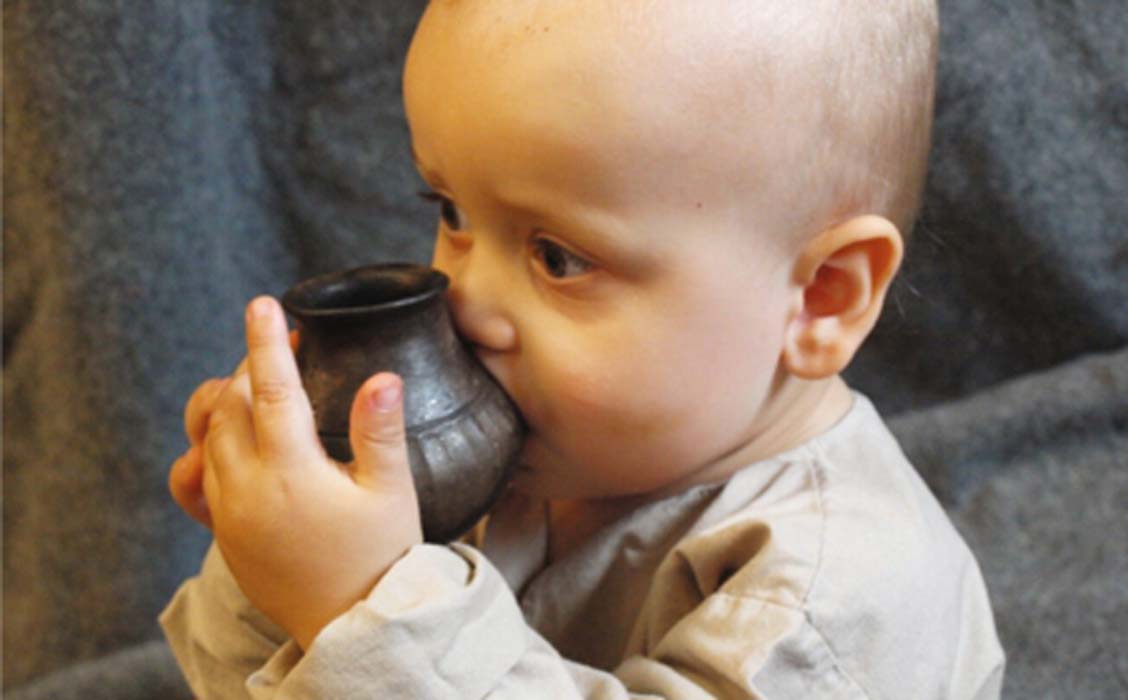

A study of some mysterious pottery vessels found in children’s graves from the Bronze and Iron Age period has made some remarkable findings. An international team of scientists now believe that these pottery pieces with spouts were made to feed infants and are ancient baby bottles. What’s more, the milk residue inside them came from domesticated animals. The study could revolutionize our ideas about prehistoric human societies.
There has long been a controversy in academic circles as to how children were weaned off breastmilk in the prehistoric past. Some experts argued that children were given breast-milk substitutes. They pointed to the many ceramic vessels with spouts as evidence found in prehistoric sites, which they claimed were used to feed infants. While others argue that prehistoric women breastfed their children right up until they could eat solid foods.

Selection of Late Bronze Age feeding vessels. The vessels are from Vienna, Oberleis, Vösendorf and Franzhausen-Kokoron (from left to right), dated to around 1200 to 800 BC. (Katharina Rebay-Salisbury / Nature)
‘Baby bottles’ examined
In order to resolve this debate, researchers examined “three small, spouted vessels that were found in Bronze and Iron Age graves of infants in Bavaria, Germany” reports Nature. The objects are between 50-100mm (2-4 inches) in length. An international team tested the residues in the artifacts, some examples of which were “crafted into the shape of little animals more than 3,000 years ago” according to The Independent. Unlike other similar pottery, the vessels found in Bavaria were ideal for testing, as they had open bowls, and this meant that they could be sampled without risk of being damaged.

Feeding vessels of the type tested in the study. A. Frisch & Katharina Rebay-Salisbury / Nature
After conducting a lipid analysis on one of the pieces of pottery they found the residue of fats that are found in milk. It seems that microscopic fats seeped into the unglazed ceramic and this meant that they could be detected after millennia. This is the first time that there is evidence that prehistoric mothers gave their infants animal milk when weaning. Julie Dunne, one of the lead authors on the study stated that, “It was looking at the context of graves that really confirmed that they were infant feeding vessels,” according to the Smithsonian.

Late Bronze Age feeding bottles from Vösendorf, Austria (Enver-Hirsch/Wien Museum)
This appears to solve the mystery of how young infants were weaned off their mother’s milk in prehistory. Nature states that this study “provides information on the infant-feeding behaviors that were practiced by prehistoric human groups”. The feeding of supplementary foods to an infant who is weaning is something unique to the human species.
Population growth
By apparently proving that human infants received supplementary foods, the study “has important implications for our understanding of infant mortality and fertility in past societies” according to Nature. If young babies were given supplementary foods during weaning such as animal milk, they would have had a better chance of surviving into adulthood. It appears that as the population adopted agriculture they had access to more animal milk, which lowered infant mortality. Moreover, according to the National Geographic “early weaning enabled mothers to have more children”. This could account for the rapid growth of population during the Bronze and Iron Age.

Image shows Bronze age use of baby feeding vessel. (Christian Bisig/Archäologie der Schweiz)
The researchers used molecular and chemical isotope analysis to determine the origin of the milk found in the ancient ‘sippy cup’. However, they could not determine from which animals the milk came. They were also unable to establish if cereals such as barley were used with the milk in the vessels. Researchers also noted that the ancient baby bottles could be hard to clean, and this may have posed a health risk to infants. The National Geographic reports that some academics argue “against assuming that feeding babies animal milk was a widespread practice in the past based on this small sample size”.
Stone Age baby bottles?
Similar infant drinking vessels have been found in Neolithic sites, “dating back to 5500 to 4800 BC” reports the Smithsonian. This raises the question, did mothers use sippy cups to feed their children animal milk in the Stone Age? We know that human communities domesticated animals about 9000 years ago. According to the Smithsonian, “Fatty residues found in pots from across the northern Mediterranean suggest humans began consuming milk and dairy products from domesticated animals during the Neolithic revolution”.
Insights in prehistory
The presence of infant feeding vessels in Neolithic sites suggests that humans fed infants supplementary foods during weaning much earlier than thought. This could have major implications for our understanding of the late Stone Age and Iron Age. If infants were fed animal milk or possibly other foods this could explain the rapid rise in population during the Neolithic-era.
By proving that the enigmatic vessels found in the graves of babies are sippy cups, the study has revealed much about ancient family life. The obvious care that was taken in making these vessels and their animal-like shapes, designed to possibly amuse infants, show us that ancient parents took a great deal of care for their offspring. It seems that mothers in the Bronze and Iron Age loved their infants as much as modern mothers.